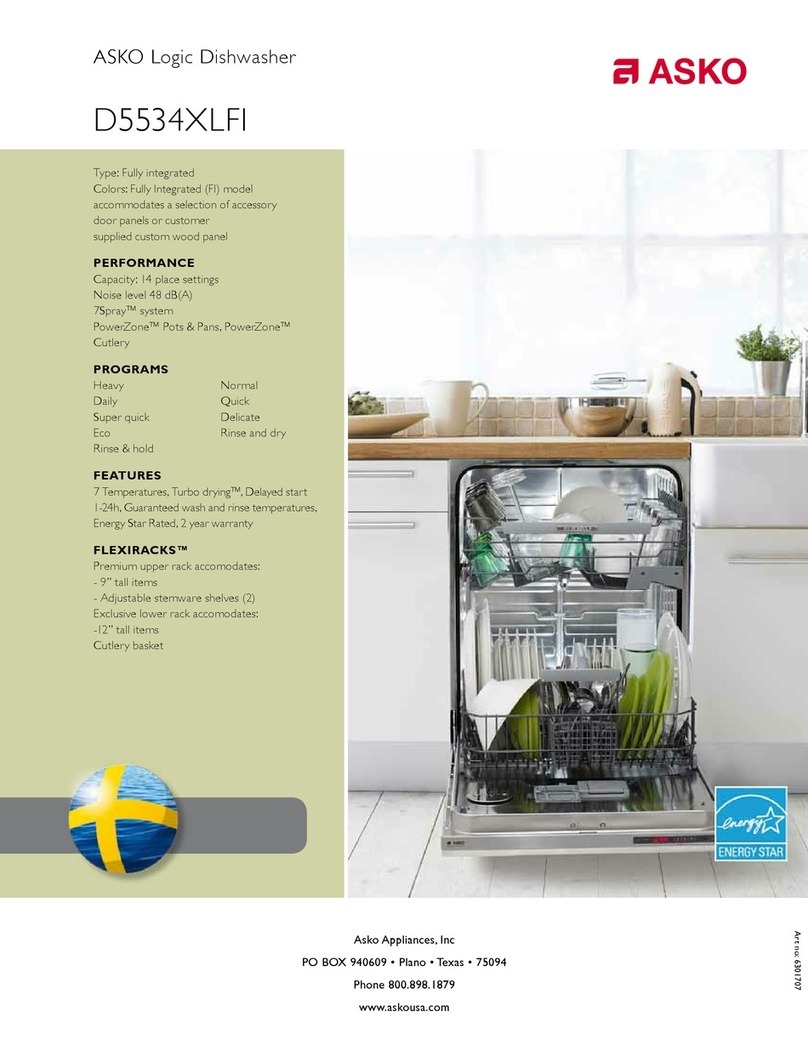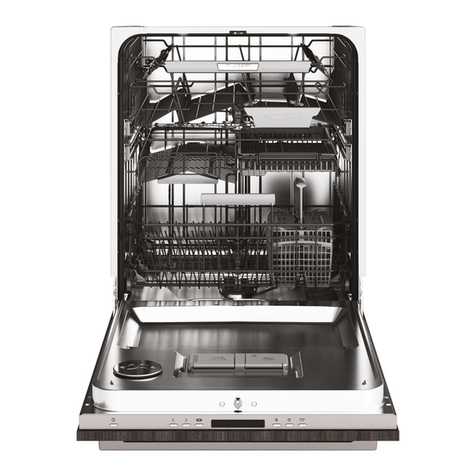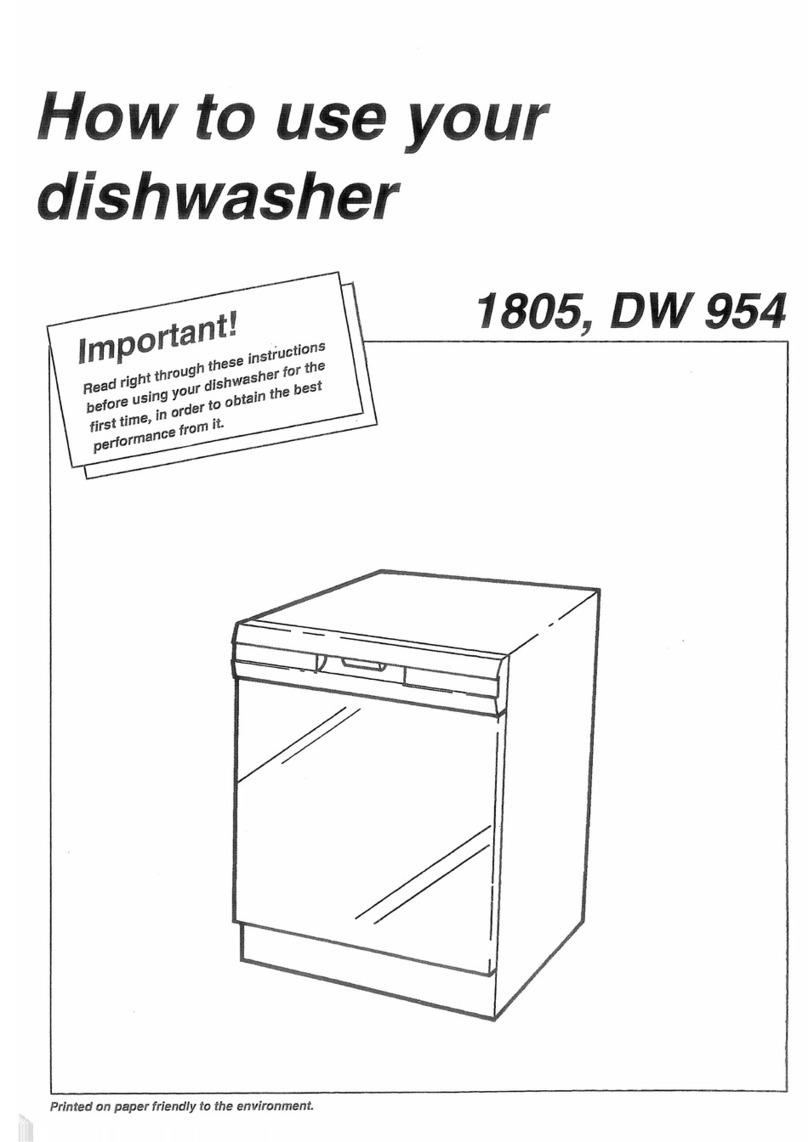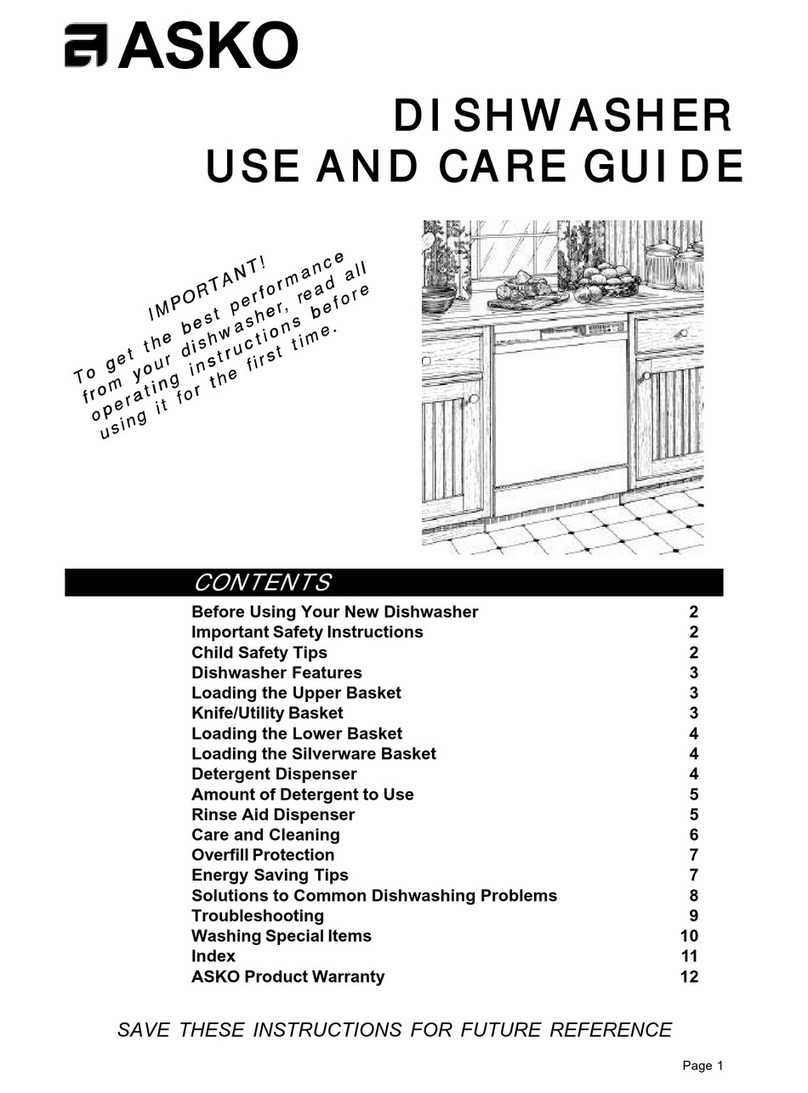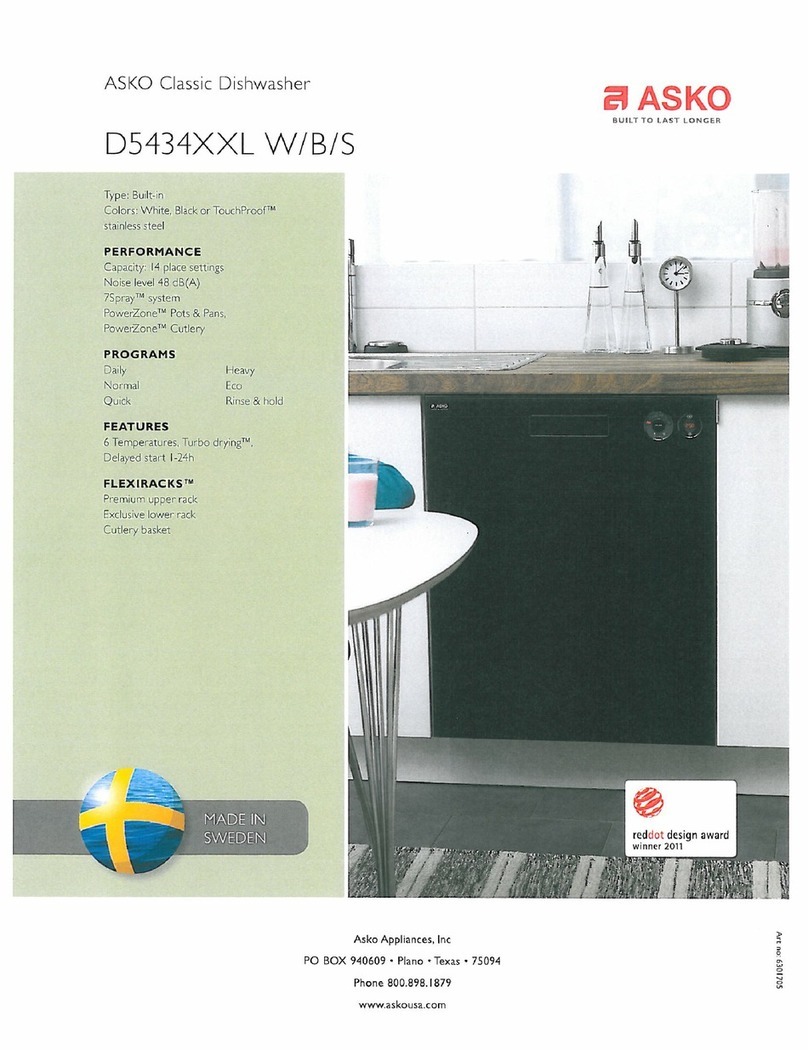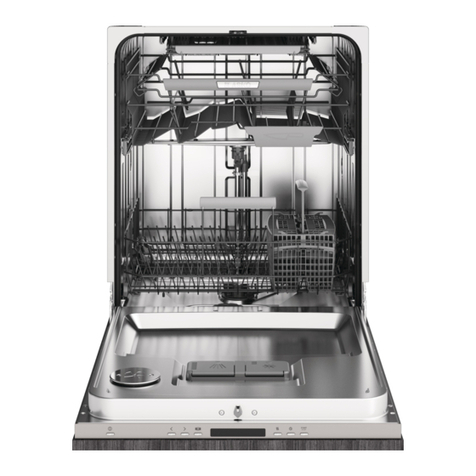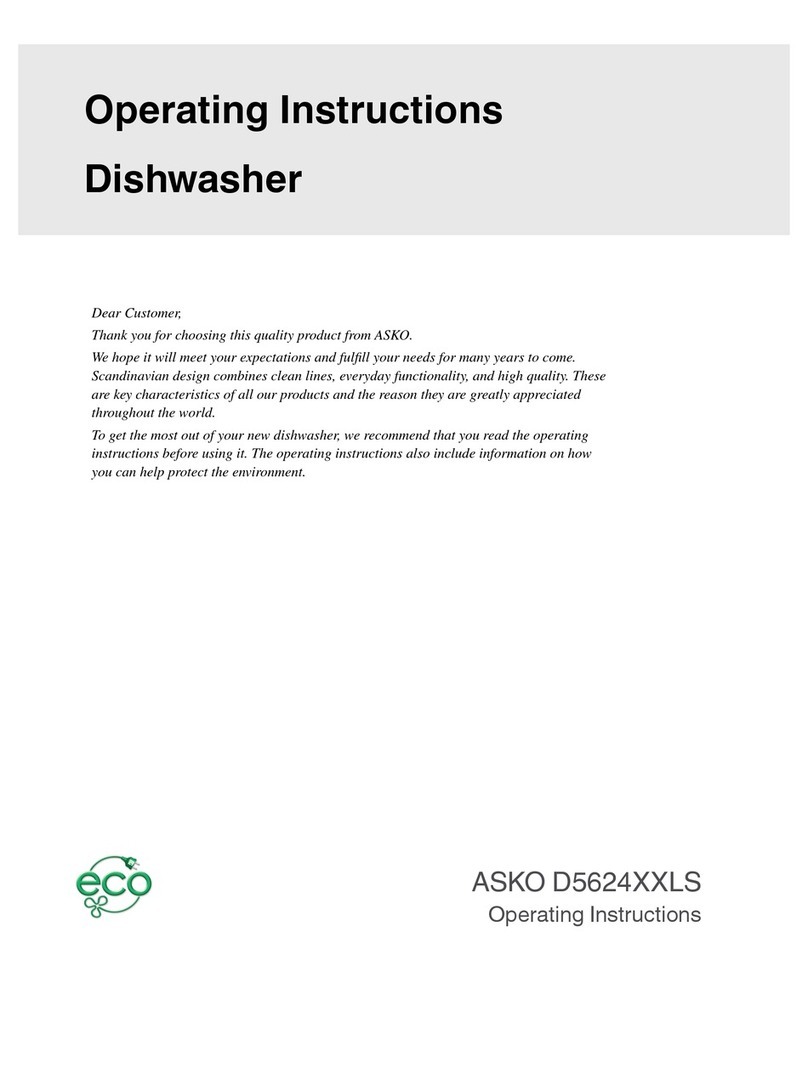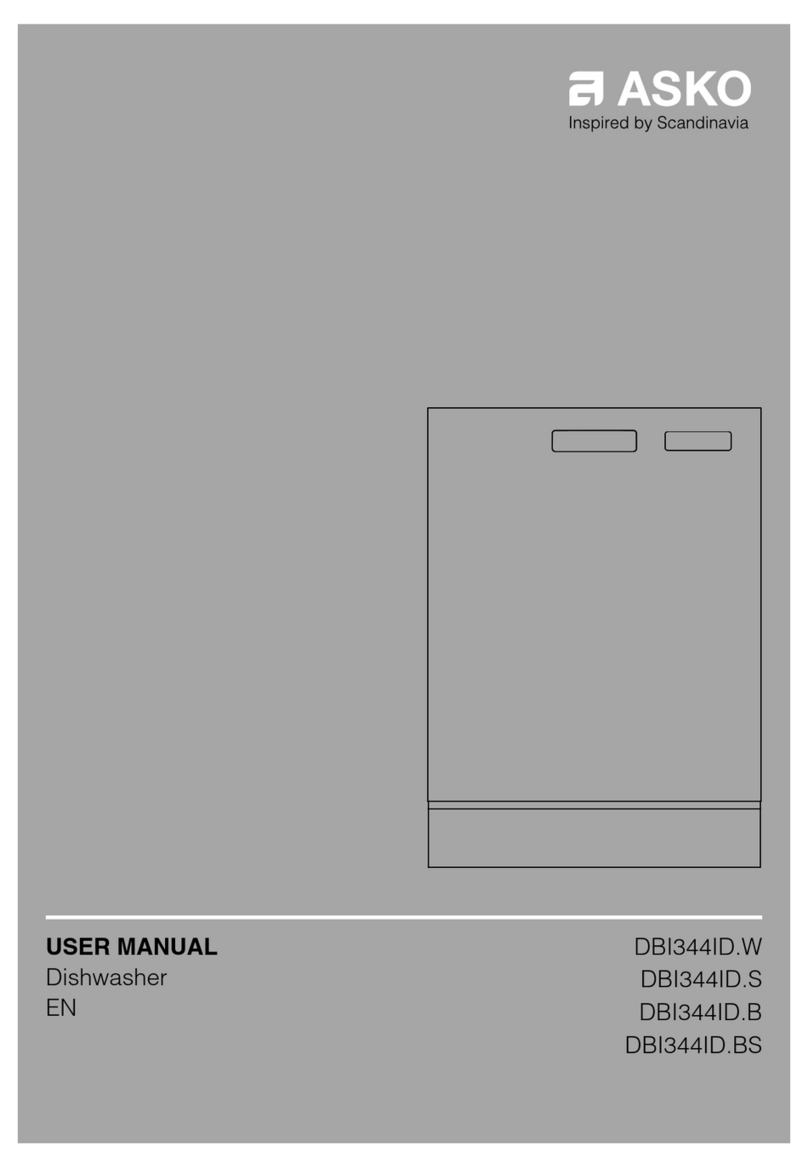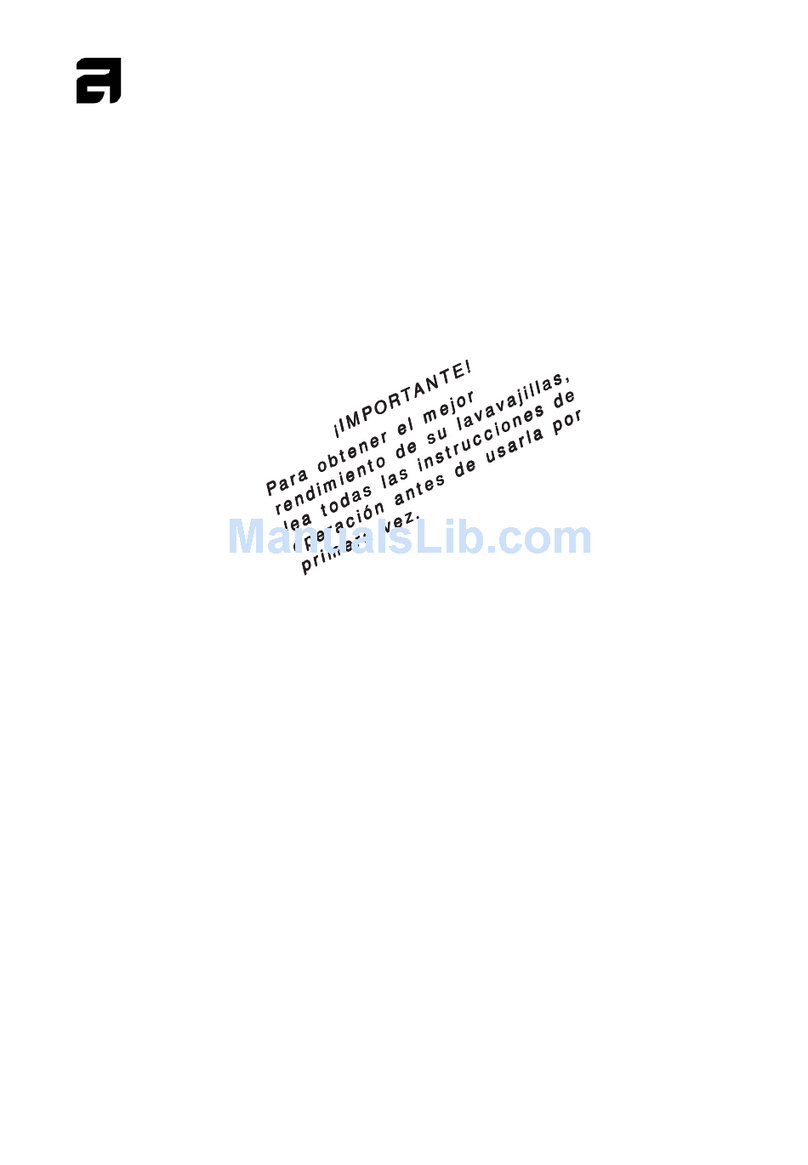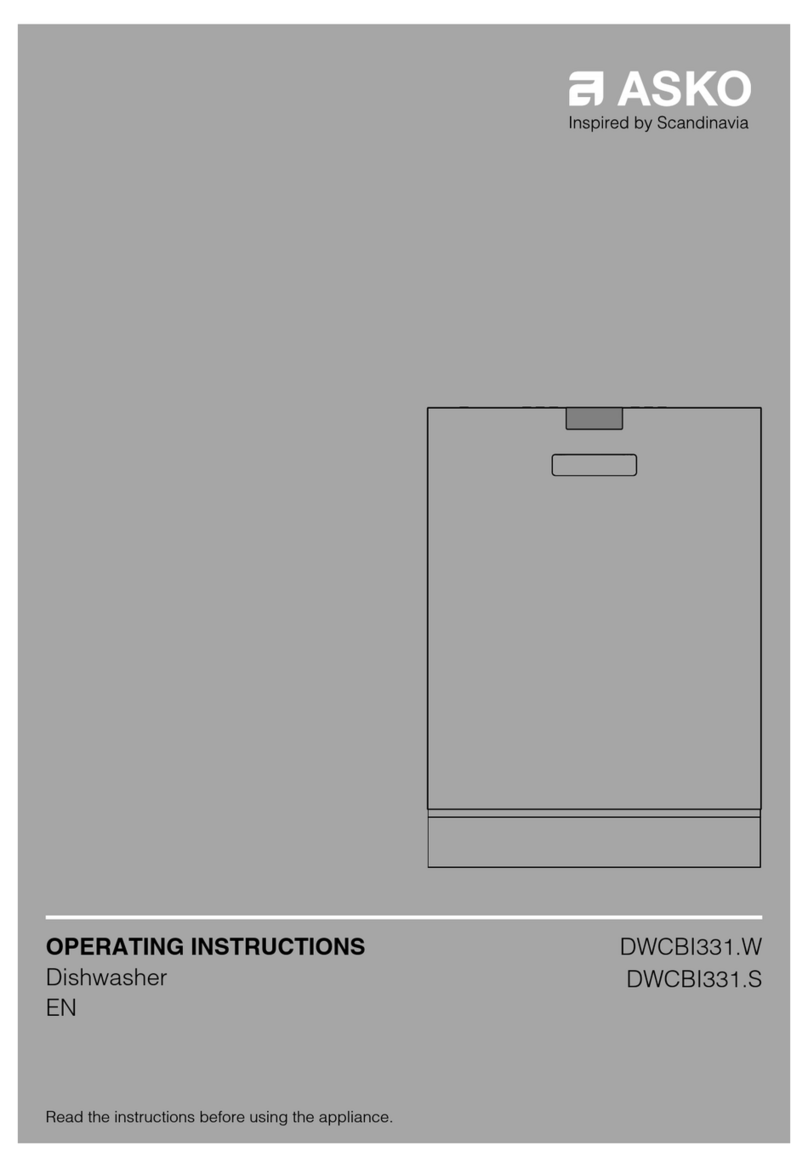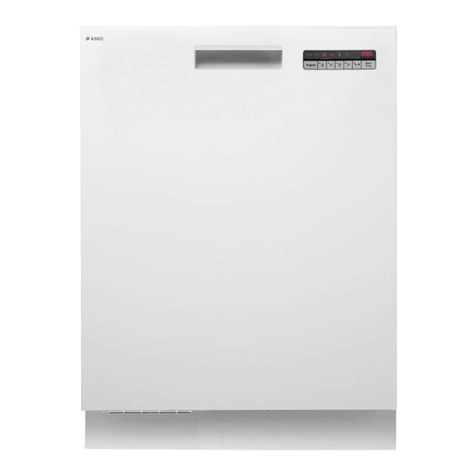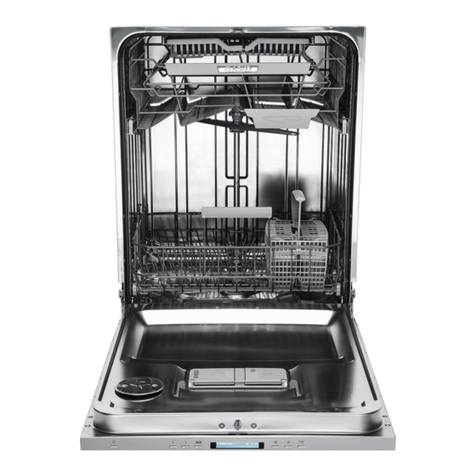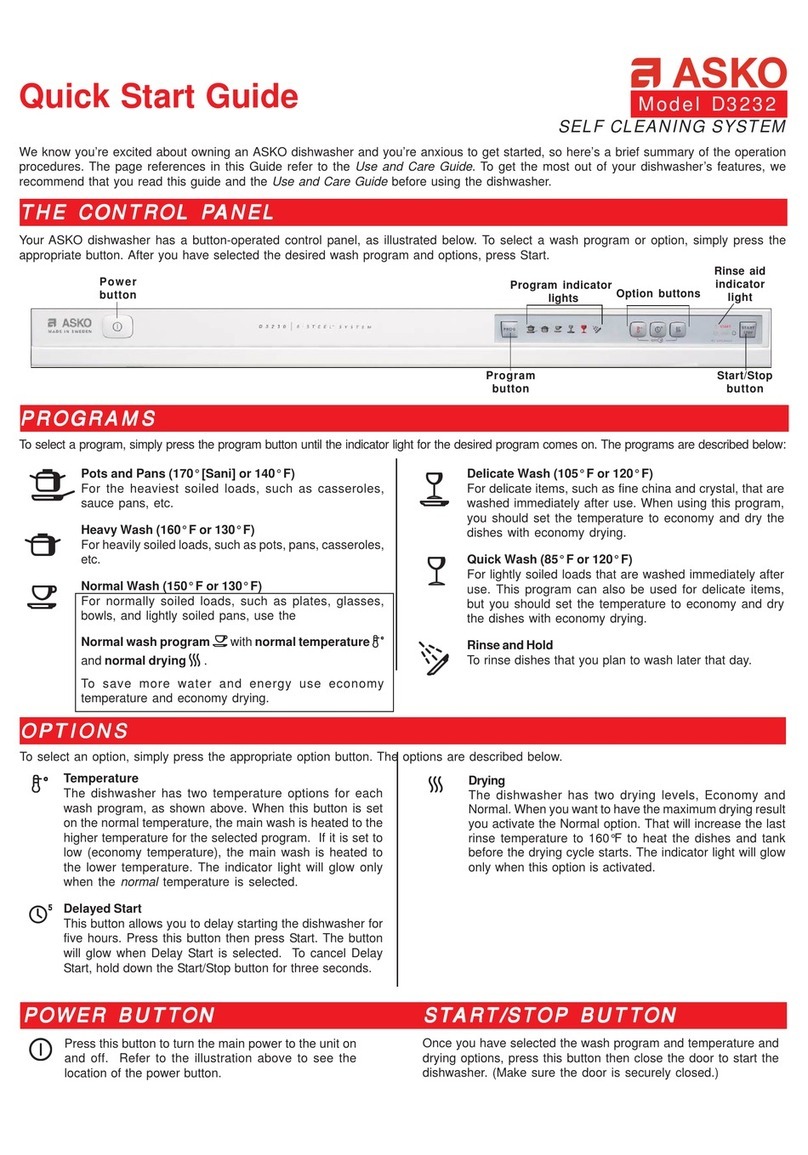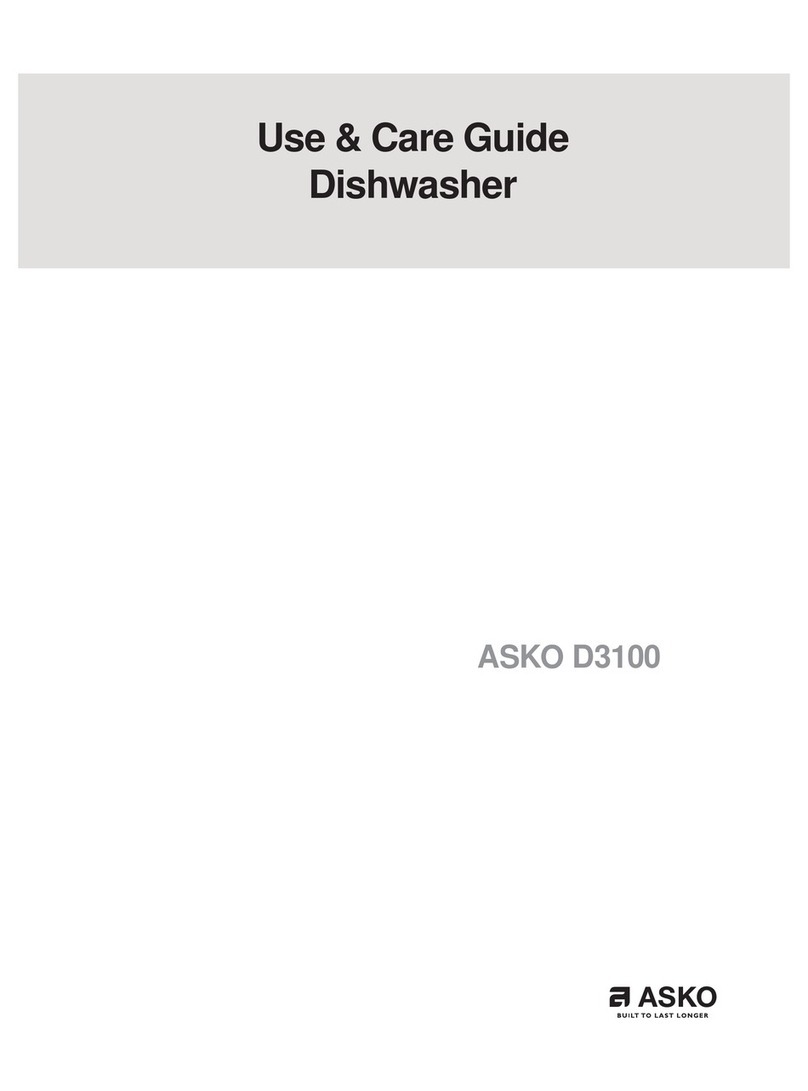
Safety instructions
General
•Read the operating instructions and keep them in a safe place!
•Number of place settings: 13
•Never use the dishwasher for any purpose other than that
specified in these operating instructions.
•Do not load the dishwasher door or dishwasher baskets with
anything other than dishes.
•Never leave the dishwasher door open as someone may trip
on it.
•Only use powder and liquid dishwasher detergent in the
dishwasher’s detergent compartment. (If an automatic dosing
system is connected, the dishwasher’s detergent compartment
must not be used).
•Only use commercial detergent and rinse aid in external
compartments if an automatic dosing system is connected.
(Commercial dishwasher detergent adapted for automatic
dosing systems should not be used in the dishwasher’s
detergent dispensing compartment. Commercial rinse aid
adapted for automatic dosing systems should not be used in
the dishwasher’s rinse aid dispensing compartment.)
•Follow the supplier’s safety regulations concerning the
handling and storage of detergent and rinse aid.
•Place knives and other sharp items so that they cannot harm
anyone or damage the dishwasher.
•The inside of the dishwasher reaches high temperatures when
a programme is in progress. Be careful when opening the
door. Let the dish load cool before taking it out.
•Do not touch the heating elements in the bottom of the
dishwasher, as they are very hot during and just after a
dishwashing programme has ended.
•This machine can be used by children aged 8 and upwards,
and by people with reduced physical capacity, mental ability,
memory loss or lacking experience and knowledge. These
individuals must be supervised when using the machine or
have instructions on how to use the machine and understand
the risks that can occur. Cleaning of the machine must not be
carried out by children without supervision.
•Children must be watched to ensure they do not play with the
dishwasher.
•Damaged mains cables must only be replaced by a qualified
electrician.
•This dishwasher is for household or similar use, such as:
- staff kitchens in shops, offices and other workplaces.
- farms.
- for guests at hotels, motels and other types of
accommodation.
- bed & breakfast hotels.
•Never place dishes with solvent residues in the dishwasher
due to the risk of explosion. Nor may dishes that contain ash,
wax or lubricants be washed in the dishwasher.
•For repairs and maintenance, original spare parts must be
used.
WARNING!
The property’s main power switch must be switched off or
power to the socket turned off during cleaning, maintenance
or when replacing parts!
Installation
Read the safety instructions before installing. See section
Installation.
Child safety
•Always close the door and start the programme immediately
after you have added the detergent.
•Keep children away from the dishwasher when the door is
open. Some detergent may remain inside!
•Do not allow children to use or play with the dishwasher. Be
especially vigilant when the door is open.
WARNING!
Children must be supervised –dishwasher detergent is
corrosive! Follow the supplier’s safety regulations concerning
the handling and storage of detergent and rinse aid.
Store detergent and rinse aid out of the reach of children! If
anyone swallows dishwasher detergent, they should
immediately drink one or two glasses of milk or water. Do not
attempt to induce vomiting. Contact a doctor! If anyone gets
dishwasher detergent in their eyes, rinse (for at least 15
minutes) with plenty of water.
Activate child lock (Kid Safe™)
You can activate the child lock (button lock) to prevent children
from starting the dishwasher (see the section Settings on page
10).
Winter storage/transport
•Store the dishwasher where the temperature remains above
freezing.
•Avoid long transport distances in very cold weather.
•Transport the dishwasher upright.
Overflow guard function
The overflow protection starts draining and ends any programme
in progress if the water level in the dishwasher exceeds the
normal level. If the protective cap is triggered, turn off the water
supply and call the service department.
Cleaning
When cleaning the edge around the door, use only a slightly
damp cloth. Do not spray water around the edge! Moisture can
make its way into the lock, which contains electrical components.
Packing material
Please sort waste materials in accordance with local guidelines.
Disposal
•When the dishwasher has reached the end of its service life
and is to be disposed of, it should immediately be made
unusable. Pull out the power cable and cut it as short as
possible.
•The dishwasher is manufactured and labelled for recycling.
•Contact your local authority for information about where and
how your dishwasher should be correctly recycled.
3


